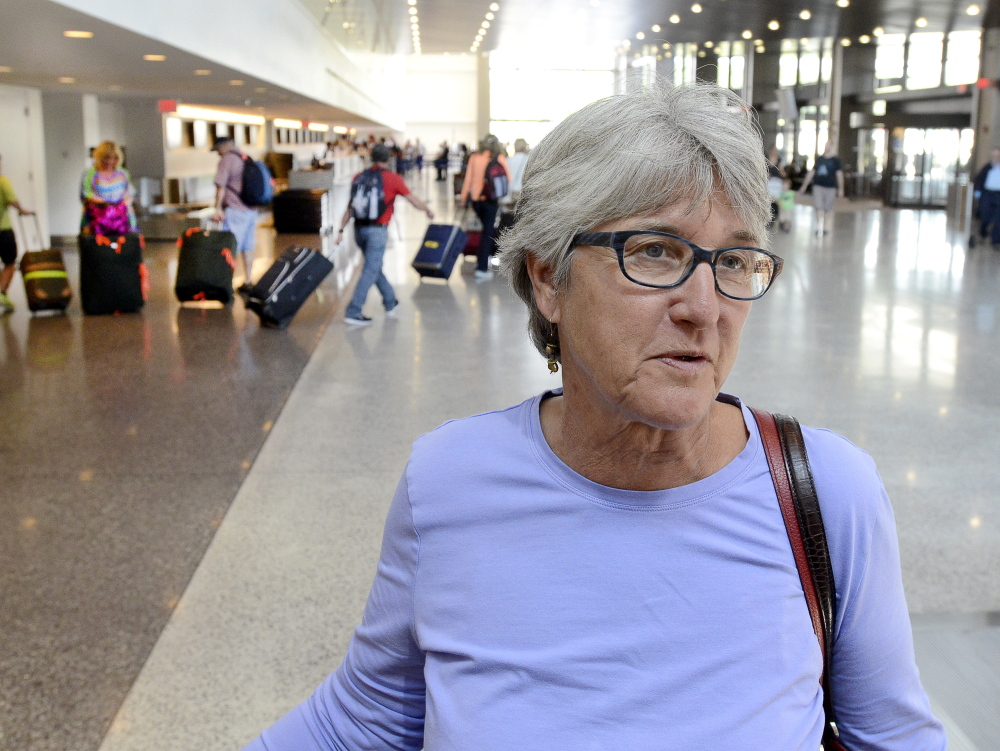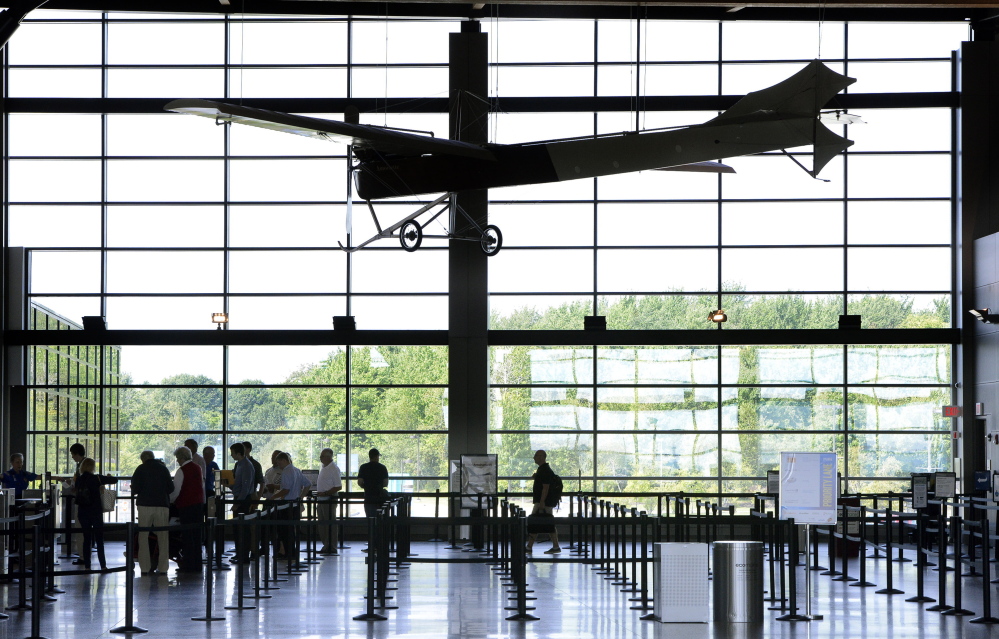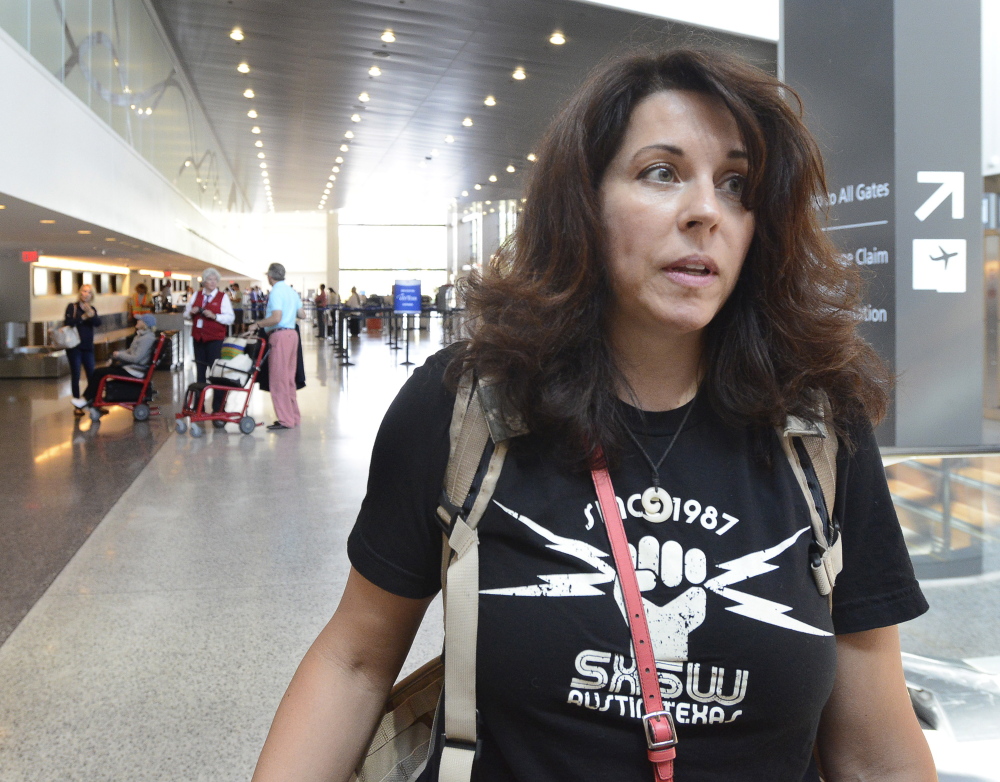Not everyone is ready to fight at the drop of a seat back.
Despite a recent series of mid-flight arguments about reclining seats on heavily packed airliners, many passengers at the Portland International Jetport on Tuesday said they’re not ready to start a dust-up at 30,000 feet if the traveler in front wants to stretch out at their expense.
“It’s not that big of a problem,” said David Jellema of Austin, Texas. Jellama said he’s never offered a peep when that seat in front comes at him, even though he’s been hit in the head — twice — while reaching forward at the same time the passenger in the row before him put the seat back.
Still, it’s an increasingly contentious issue on many flights — three were diverted in the last two weeks when passengers got into fights about the right to recline vs. the right to retain feeling in one’s knees.
Many passengers seem resigned to be squeezed into a small airline seat and then squished some more by a reclining passenger. It’s considered just another price to pay — along with charges for checked baggage and food — for traveling by air, or what many referred to as cattle cars.
Leslie Thurston, of Seattle, said she’s never gotten a complaint when she put her own seat back, although she said, “Sometimes they let out a long sigh or something.” Thurston said the sigh might buy the passenger behind her a little space, because after she hears it, she usually doesn’t recline her seat all the way back.
Susan Sanders, of Los Angeles, said she feels justified in speaking up if someone’s keeping her from a relaxing flight.
“I usually say something,” she said, whether it’s about a reclining passenger in front or a child kicking her seat from behind.
“I’m not shy,” she said, “but it’s not enough to divert the flight.”
In the eternal tug-of-war between the recliner and the reclined-upon, there may be no winner. Even etiquette advice columnist Miss Manners, who has been asked several times over the years who should prevail in the legroom battle, threw up her hands and admitted there’s no good answer, suggesting it might be best decided in court.
Sam Hirsh, the owner of Tripquipment in Falmouth, a store that sells travel gear, said the fights are a sign of a growing number of airline customers who often feel pushed and prodded and nickle-and-dimed by the airlines even before they get on a flight and more packed than ever once they are on board.
Hirsh said he once saw someone so determined to recline a seat that the screen of the laptop being used by the person behind cracked when the computer was caught between the seatback and the tray table.
The problems stem from an airline industry push to add seats in an effort to boost per-flight profitability. A few years ago, the airlines cut the number of flights they offered, to ensure more seats were full on each flight. Adding more seats just builds on that focus of fuller planes and higher profits.
Southwest and United recently cut inches of leg room on some of its jets to squeeze in six more seats, according to the Associated Press. Delta made the toilets on its 737s smaller to put in four more seats and JetBlue cut an inch of leg room on cross-country flights — to create more room for lie-down beds in first class.
A few years ago, the European cut-rate airline Ryan Air floated several ideas to squeeze more money out of each flight, including making passengers pay for access to toilets. Executives also suggested removing 10 rows of seats to create a section for standing passengers.
Chris Lopinto, president and co-founder of the travel advice website expertflyer.com, said the fights reflect “a combination of fewer flights, less legroom and increased frustration.”
He said nearly every flight these days is full, even when more seats are squeezed in. The only relief, he said, is to pay more for “economy plus” seats, which offer five or six more inches of leg room, or dig even deeper for first-class seats.
“Being a premium passenger on a flight is getting better and being an economy passenger … is not getting better. And that’s not changing anytime soon,” Lopinto said.
Hirsh said he thinks a lot of the problems stem from a lack of courtesy that, in turn, can be traced back to the idea that flying has become something to be endured and is no longer considered a special occasion.
“In our society, we’ve lost that,” Hirsh said.
That has given rise to such things as the “Knee Defender,” a $21.95 gadget that clamps onto seat tray arms to prevent the seat in front from reclining. Many airlines don’t want passengers to use the devices, which one columnist called the world’s most passive-aggressive travel accessory.
It also doesn’t defuse tense situations: One of the diverted flights last week was caused by a fight between a passenger who used the device and the one in front who objected to not being able to recline. The fight ended with one passenger dumping a cup of water on the other’s head.
Hirsh doesn’t carry the device, he said, “although I wish I did.”
Both passengers and the airlines are to blame for the level of frustration, Hirsh said. Travelers want a cheap fare and the airlines can offer that only by adding seats and charging for some services.
That adds up to passengers who are already girded for battle when they board a flight, he said, and airline employees who might be surly from dealing with disgruntled passengers all day.
“It can become an adversarial engagement,” he said.
Send questions/comments to the editors.






Success. Please wait for the page to reload. If the page does not reload within 5 seconds, please refresh the page.
Enter your email and password to access comments.
Hi, to comment on stories you must . This profile is in addition to your subscription and website login.
Already have a commenting profile? .
Invalid username/password.
Please check your email to confirm and complete your registration.
Only subscribers are eligible to post comments. Please subscribe or login first for digital access. Here’s why.
Use the form below to reset your password. When you've submitted your account email, we will send an email with a reset code.